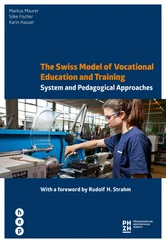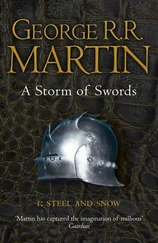124 114
125 115
126 116
127 117
128 118
129 119
130 120
131 121
132 122
133 123
134 124
135 125
136 126
137 127
138 128
139 129
140 130
141 131
142 132
143 133
144 134
145 135
146 136
147 137
148 138
149 139
150 140
151 141
152 143
153 144
154 145
155 146
156 147
157 148
158 149
159 150
160 151
161 152
162 153
163 154
164 155
165 156
166 157
167 158
168 159
169 160
170 161
171 162
172 163
173 164
174 165
175 166
176 167
177 168
178 169
179 170
180 171
181 172
182 173
183 174
184 175
185 177
186 178
187 179
188 180
189 181
190 182
191 183
192 184
193 185
194 186
195 187
196 188
197 189
198 191
199 193
200 194
201 195
202 196
203 197
204 198
205 199
206 200
207 201
208 202
209 203
Series Editor
Nikolaos Limnios
Random Motions in Markov and Semi-Markov Random Environments 2
High-dimensional Random Motions and Financial Applications
Anatoliy Pogorui
Anatoliy Swishchuk
Ramón M. Rodríguez-Dagnino

First published 2021 in Great Britain and the United States by ISTE Ltd and John Wiley & Sons, Inc.
Apart from any fair dealing for the purposes of research or private study, or criticism or review, as permitted under the Copyright, Designs and Patents Act 1988, this publication may only be reproduced, stored or transmitted, in any form or by any means, with the prior permission in writing of the publishers, or in the case of reprographic reproduction in accordance with the terms and licenses issued by the CLA. Enquiries concerning reproduction outside these terms should be sent to the publishers at the undermentioned address:
ISTE Ltd
27-37 St George’s Road
London SW19 4EU
UK
www.iste.co.uk
John Wiley & Sons, Inc.
111 River Street
Hoboken, NJ 07030
USA
www.wiley.com
© ISTE Ltd 2021
The rights of Anatoliy Pogorui, Anatoliy Swishchuk and Ramón M. Rodríguez-Dagnino to be identified as the authors of this work have been asserted by them in accordance with the Copyright, Designs and Patents Act 1988.
Library of Congress Control Number: 2020946634
British Library Cataloguing-in-Publication Data
A CIP record for this book is available from the British Library
ISBN 978-1-78630-706-4
Motion is an essential element in our daily life. Thoughts related to motion can be found in the ancient Greek philosophers; however, we have to look several centuries ahead for relevant mathematical models. Galileo Galilei, Isaac Newton and Johannes Kepler, between the years 1550–1650, made remarkable advances in the construction of mathematical models for deterministic motion. Further advances in this line were made by Leonhard Euler and William Rowan Hamilton, and, in 1778, Joseph-Louis Lagrange proposed a new formulation of classical mechanics. This new formulation is based on the optimization of energy functionals, and it allows us to solve more sophisticated motion problems in a more systematic manner. This new approach to mechanics is the basis for dealing with modern quantum mechanics and the physics of high-energy particles. Albert Einstein, in 1905, through his special theory of relativity, introduced fine corrections for high velocities, close to the maximum speed of light. All of these fundamental mathematical models deal with many sophisticated motions such as that of astronomical objects, satellites (natural and artificial), particles in intense electromagnetic fields, particles under gravitational forces, a better understanding of light, and so on. However, even though these might be very complicated problems, we should mention that all of them have deterministic paths of motion.
In 1827, the Scottish botanist Robert Brown described a special kind of random motion produced by the interaction of many particles, while looking at pollen of the plant Clarkia pulchella immersed in water, using a microscope, and it was recognized that this type of motion could not be fully explained by modeling the motion of each particle or molecule. Albert Einstein, 78 years later, in 1905, published a seminal paper where he modeled the motion of the pollen as being moved by individual water molecules. In this work, the diffusion equation was introduced as a convenient mathematical model for this random phenomenon. A related model in this direction was presented in 1906 by Marian Smoluchowski, and the experimental verification was done by Jean Baptiste Perrin in 1908.
A similar model for Brownian motion was proposed in 1900 by Louis Bachelier in his PhD thesis entitled The Theory of Speculation , where he presented a stochastic analysis for valuing stock options in financial markets. This novel application of a stochastic model faced criticism at the beginning, but Bachelier’s instructor Henri Poincaré was in full support of this visionary idea. This fact shows a close relationship between models to explain random phenomena in physics (statistical mechanics) and in financial analysis, and also in many other areas.
A notable contribution of the American mathematician Norbert Wiener was to establish the mathematical foundations for Brownian motion, and for that reason it is also known as the Wiener process. Great mathematicians such as Paul Lévy, Andrey Kolmogorov and Kiyosi Itô, among many other brilliant experts in the new field of probability and stochastic processes, set the basis of these stochastic processes. For example, the famous Black–Scholes formula in financial markets is based on both diffusion processes and Itô’s ideas.
In spite of its success in modeling many types of random motion and other random quantities, the Wiener process has some drawbacks when capturing the physics of many applications. For instance, the modulus of velocity is almost always infinite at any instant in time, it has a free path length of zero, the path function of a particle is almost surely non-differentiable at any given point and its Hausdorff dimension is equal to 1.5, i.e. the path function is fractal. However, the actual movement of a physical particle and the actual evolution of share prices are barely justified as fractal quantities. Taking into account these considerations, in this book we propose and develop other stochastic processes that are close to the actual physical behavior of random motion in many other situations. Instead of the diffusion process (Brownian motion), we consider telegraph processes, Poisson and Markov processes and renewal and semi-Markov processes.
Markov (and semi-Markov) processes are named after the Russian mathematician Andrey Markov, who introduced them in around 1906. These processes have the important property of changing states under certain rules, i.e. they allow for abrupt changes (or switching) in the random phenomenon. As a result, these models are more appropriate for capturing random jumps, alternate velocities after traveling a certain random distance, random environments through the formulation of random evolutions, random motion with random changes of direction, interaction of particles with non-zero free paths, reliability of storage systems, and so on.
Читать дальше




![О Генри - Русские соболя [Vanity and Some Sables]](/books/405344/o-genri-russkie-sobolya-vanity-and-some-sables-thumb.webp)








